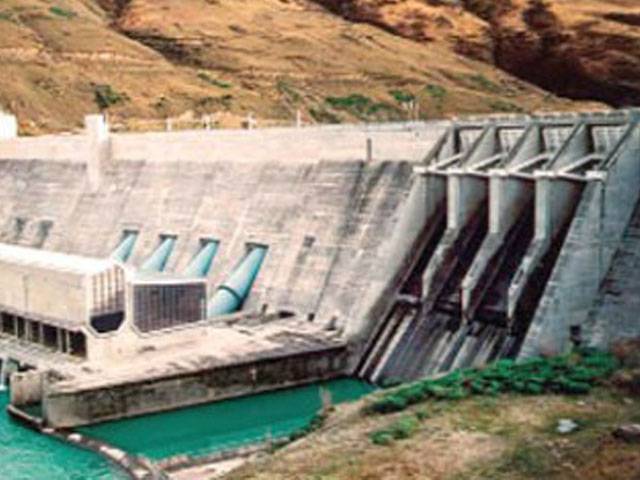LAHORE - Pakistan’s water storage capacity is just for 30 days against the minimum requirement of 120 days while most of the developed countries have 1-2 years water storage capability.
“The agriculture productivity in Pakistan in the wake of just 30 days water storage capacity has alarmingly tumbled because of the water scarcity and its contribution towards gross domestic product has lowered by 21.8 per cent of GDP,” said noted agriculturist Jamshed Cheema. “India has the ability to store water for 120-220 days. Egypt has 1,000 days water storage capacity only on River Nile, America 900 days on River Colorado, Australia 600 and South Africa has the ability to store water for 500 days on River Orange.”
Pakistan Agriculture Scientists Association Chairman Jamshed Iqbal Cheema said that water shortage in Pakistan will increase to 31% of people’s needs by 2025 and he underlines the need for some tangible steps, including water usage charges and building of huge water reservoirs including Kalabagh Dam, to cope with the coming problems.
Water is lifeline for Pakistan and even more important issue than Kashmir and Islamabad should relate this vital issue with granting of MFN status to India, Cheema suggested.
He lamented that the top political leadership and establishment are not paying heed towards improving the water storage capacity of the country and increasing the per capita water availability, rather their indifference to this alarming issue is forcing 173 million people of the country to food insecurity in the years to come.
He stated that per capita water availability at the time of creation of Pakistan was 5,600 cubic metres, but it currently stands at only 1,000 cubic metres, placing Pakistan among water-scarce countries. To tackle the situation, Cheema suggested that the government should apply reasonable water usage charges to discourage wastage of the resource. “Adoption of modern water conservation methods and agricultural practices is imperative to cope with water scarcity as Pakistan has been placed in red zone due to low per capita water availability at 1,000 cubic metres.”
The noted agriculture expert observed that India has 1,600 cubic metres of water per person per year while major European countries have up to twice as much ranging from 2,300 cubic metres in Germany to 3,000 cubic metres in France.
Jamshed Iqbal Cheema said that country’s live water storage capacity has further dropped by 29 per cent in the water reservoir which is badly affecting the agricultural and power sectors of the country. He said that Tarbela dam had lost 32 per cent water storage capacity as its original live water storage was 9.69 million acre feet (MAF) while the present live water storage capacity was 6.56 MAF. Similarly, Mangla dam had an original capacity of 5.34 MAF while the present live storage capacity of the dam stood at 4.41 MAF, showing an 18% loss of water storage capacity. He further informed that Chashma Dam was not working at its full capacity.
He said that per capita water availability has alarmingly decreased, a situation where human survival becomes difficult and economic development also comes to a halt.
According to him, Pakistan’s water situation is deteriorating day-by-day and if the status quo continues then Pakistan will be left to face unprecedented catastrophe in terms of touching the per capita water availability to its lowest ebb. He said that Wapda had placed demand of releasing Rs100 billion for 35 water projects but it has been committed only Rs24.12 billion. This is the main reason that country has failed to increase the water availability in the country, he said.
He pinpointed that in Pakistan, water is excessively wasted at houses, offices, markets and factories. Fresh and drinking water is used for washing, gardening and other non-drinkable purposes.
“Besides wastage, burgeoning population, climate change, lack of water reservoirs and manipulation of Jhelum and Chenab rivers by India are other key factors squeezing water availability in Pakistan.
Tuesday, October 22, 2024
Water storage capacity just for 30 days
Water is lifeline for Pakistan and issue should be linked to granting MFN status to India, says Jamshed Cheema

Pakistan likely to make one change for third test against England in Rawalpindi
4:50 PM | October 22, 2024
PSX maintains bullish momentum after 26th Constitutional Amendment
4:49 PM | October 22, 2024
BNP-Mengal’s senator Qasim Ronjho resigns from Senate
4:47 PM | October 22, 2024
Meta's Israel policy chief sought to censor pro-Palestinian Instagram posts
3:50 PM | October 22, 2024
PM hails 26th Amendment as key to Pakistan's development and justice reform
3:20 PM | October 22, 2024
-
CJP Qazi Faez Isa begins chamber work ahead of retirement
-
CJP Qazi Faez Isa begins chamber work ahead of retirement
-
Pakistani students join Chinese martial arts training camp in Shanxi
-
PTI to boycott voting for constitutional amendments
-
Multan Victory: Will Critics Finally Reflect On Their Unfair Blame Of Mohsin Naqvi?
-
Pakistan ends 15-month winless streak with commanding victory against England in Multan Test
Kashmiri Resistance
October 22, 2024
Anti-Smog Initiatives
October 22, 2024
New Realities
October 22, 2024
Another Jadhav
October 21, 2024
Judiciary Revamped
October 21, 2024
Livestock Sector in Shambles
October 22, 2024
Women’s Suffering
October 22, 2024
Impact of AI
October 22, 2024
The State’s War on Activism
October 22, 2024
Toxic Air
October 22, 2024
ePaper - Nawaiwaqt
Nawaiwaqt Group | Copyright © 2024





